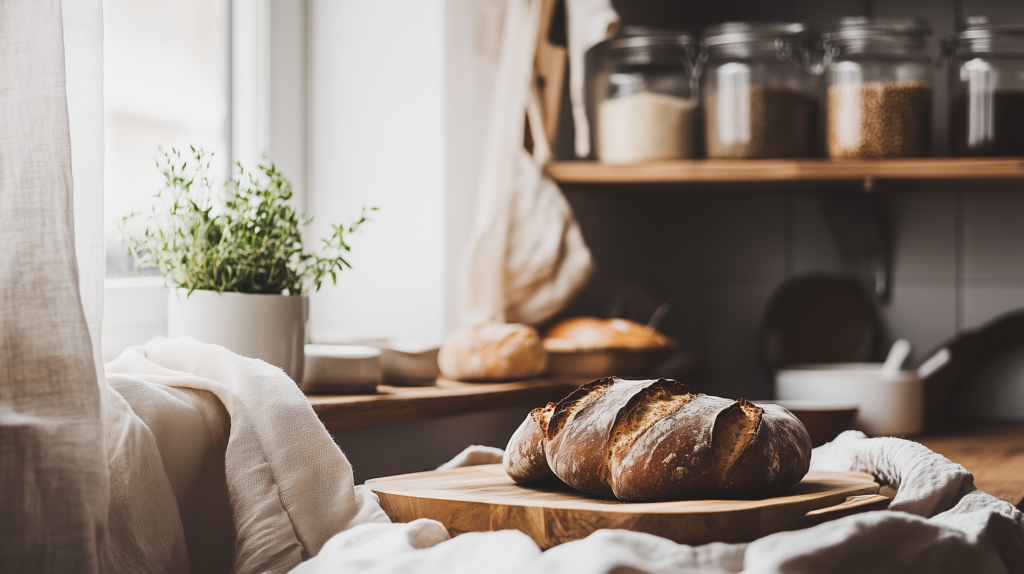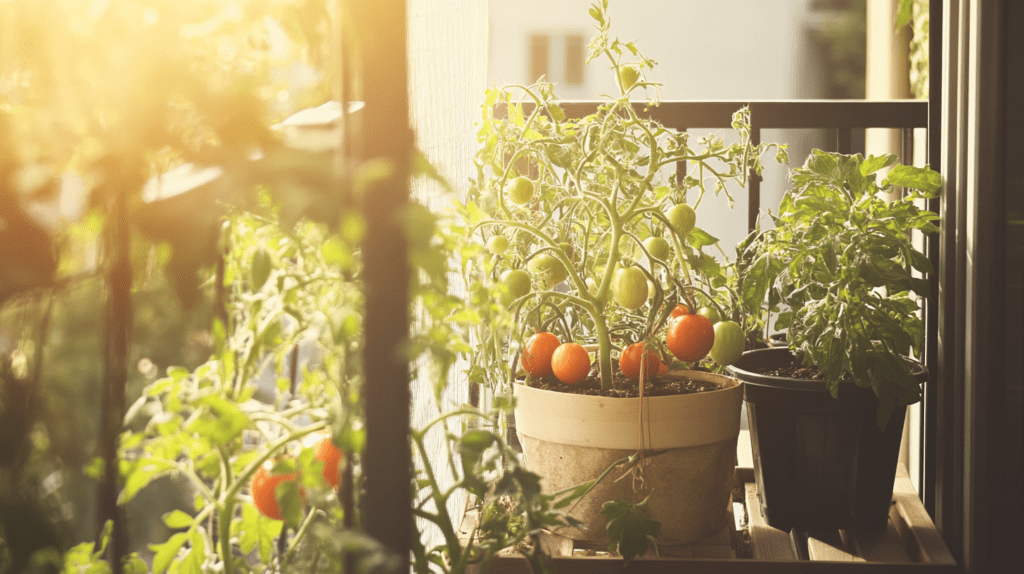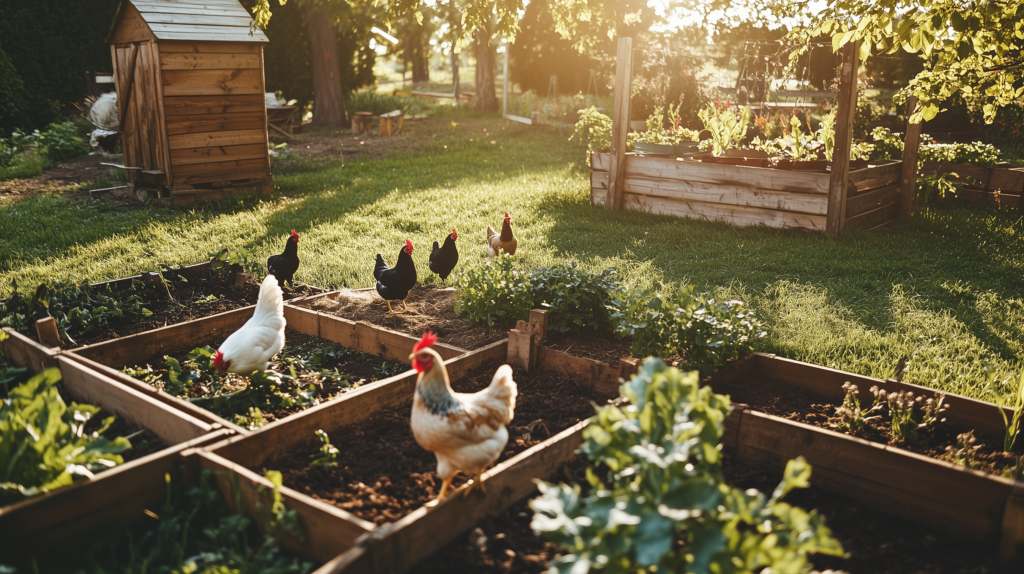This post may contain affiliate links, including those from Amazon Associates. If you make a purchase through these links, I may earn a commission at no additional cost to you. Learn more about our affiliate policy.
I know the feeling: dreaming of wide open land, a flourishing garden, and a lifestyle free from the constant dependency on grocery stores, utilities, and modern conveniences.
The idea of homesteading has called to me for years, but like many people, I’ve spent much of my life in a city. And here’s what I’ve learned: you don’t have to wait until you own land to start living more self-sufficiently.
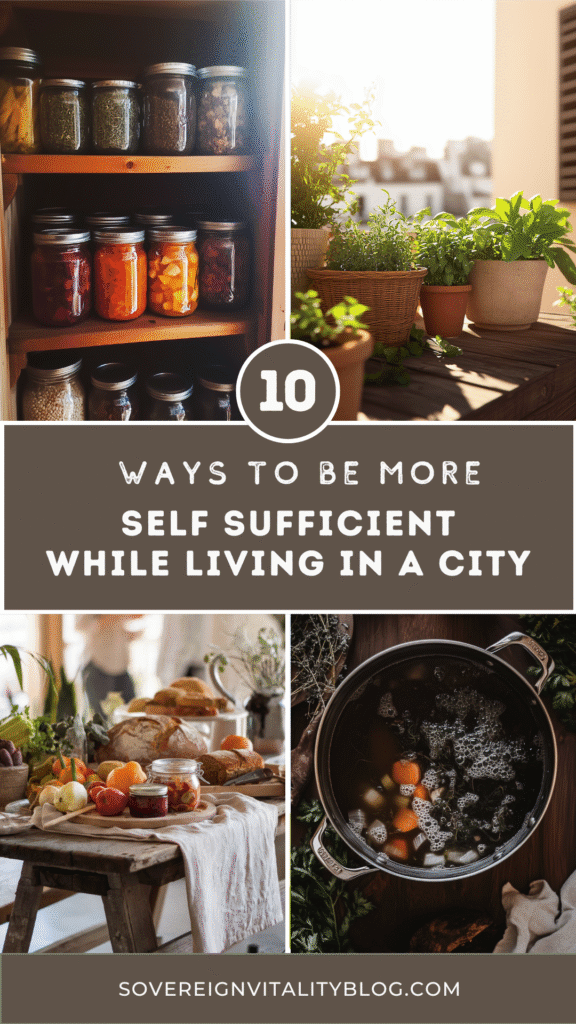
The rise of small-space homesteading is about making intentional choices and gaining the skills that bring a deeper sense of sovereignty. It’s a shift in mindset that allows you to break away from traditional systems, even if you’re in an apartment or a home with only a tiny backyard.
This guide is for those of us who crave more independence but aren’t quite ready (or willing) to leave city life behind just yet. I’ll walk you through 10 practical and creative ways to start building self-sufficiency where you are and cultivate new ways to reduce reliance on modern conveniences.
Even small changes can lead to a more sovereign and sustainable life, no matter where you call home.
1. Grow Your Own Food (Even in a Small Space)

One of the biggest steps toward self-sufficiency is growing your own food, but you don’t need a backyard to do it! Even in a small apartment, there are plenty of ways to cultivate fresh produce, from leafy greens to herbs and even compact fruiting plants. When I first started experimenting with urban gardening, I was surprised by how much food I could grow with just a few containers and some sunlight.
Balcony and Window Sill Gardening
If you have a balcony or a sunny window, you have the perfect setup for container gardening. Herbs and leafy greens are some of the easiest plants to start with, and they don’t require much space.
Some beginner-friendly options include:
- Herbs: Basil, thyme, mint, and parsley thrive in small pots and regrow quickly after harvesting.
- Leafy greens: Lettuce, spinach, and arugula can be grown in shallow planters and harvested continuously.
- Root vegetables: Small varieties of carrots, radishes, and green onions grow well in deep containers.
- Here are some more ideas for the easiest vegetables and herbs to grow on your balcony garden.
Indoor Hydroponics or AeroGardens
For those without outdoor space, hydroponic systems and AeroGardens offer a simple way to grow fresh food indoors. These systems use water and nutrients instead of soil, making them low-maintenance and highly efficient.
- Hydroponic kits: Small countertop systems allow you to grow lettuce, herbs, and even tomatoes year-round.
- Mason jar hydroponics: A budget-friendly option using mason jars, net cups, and nutrient solutions for growing herbs indoors.
- AeroGardens: A plug-and-play hydroponic system that provides built-in lighting and automatic watering for easy indoor gardening.
Here are 7 creative indoor vertical herb garden ideas to get you started.
Microgreens and Sprouts
If space is extremely limited, microgreens and sprouts are a fantastic way to grow fresh food quickly and easily. These tiny greens are packed with nutrients and can be harvested in just one to two weeks.
- Sprouts: Alfalfa, broccoli, and radish sprouts require only a jar, water, and a strainer lid.
- Microgreens: Pea shoots, sunflower greens, and mustard greens can be grown in shallow trays on a windowsill.
- Wheatgrass: A great option for juicing, wheatgrass grows quickly and thrives indoors.
2. Learn to Preserve and Store Food
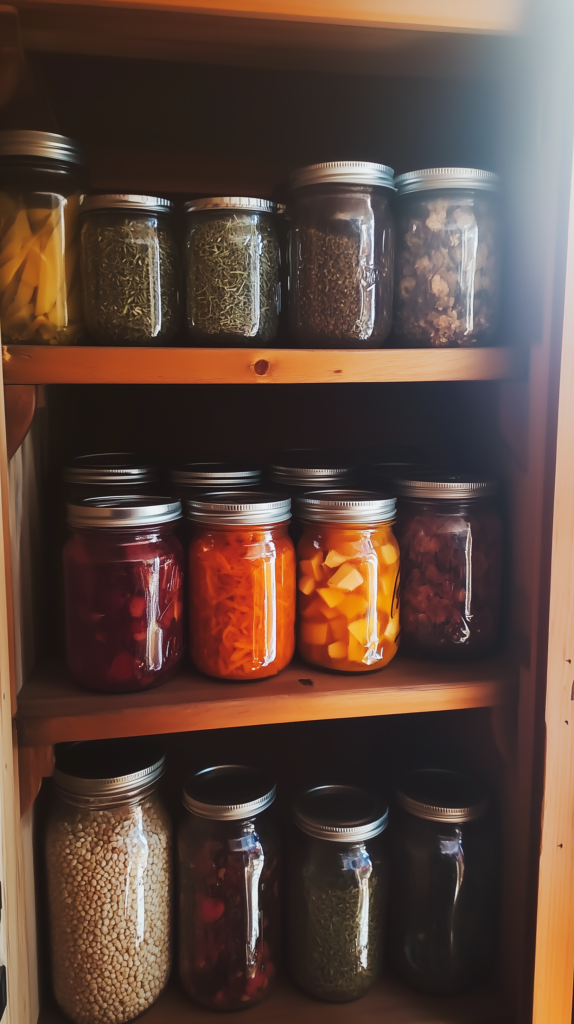
Once you start growing your own food or buying in bulk, the next step toward self-sufficiency is learning how to store and preserve it. When I first started experimenting with food preservation, I was amazed at how much I could extend the shelf life of fresh ingredients with just a few simple techniques.
Canning, dehydrating, and fermenting
Preserving food at home doesn’t have to be complicated. Even without a homestead, you can prepare for the future by keeping seasonal produce fresh for longer.
- Canning: Water bath canning is great for jams, pickles, and tomato sauces, while pressure canning allows you to preserve low-acid foods like beans and soups.
- Dehydrating: A dehydrator or even a low-temperature oven can dry fruits, herbs, and vegetables for long-term storage.
- Fermenting: Sauerkraut, kimchi, yogurt, and kombucha are easy ways to preserve food while boosting gut health. Get started with this easy kit.
Freezer meal prep
Freezing is one of the easiest ways to preserve food. Prepping meals in advance can help you rely less on store-bought convenience foods and make busy days easier.
Some ideas for freezer-friendly staples:
- Chopped fruits and vegetables for smoothies and cooking
- Homemade soups and broths
- Pre-made dough for bread, pizza, or biscuits
- Marinated proteins for quick, ready-to-cook meals
Quick Pickling: The Easiest Way to Start Preserving
If you’re new to food preservation, quick pickling is one of the easiest ways to start. Unlike traditional canning, it doesn’t require special equipment or long processing times—you just need vinegar, salt, sugar, and spices.
- Slice vegetables like cucumbers, carrots, red onions, or radishes.
- Pack them into a jar and pour over a hot vinegar brine.
- Let them sit in the fridge for a few hours or overnight, and they’re ready to eat.
Find 7 easy recipes for quick pickled vegetables here.
3. Make Your Own Household Products
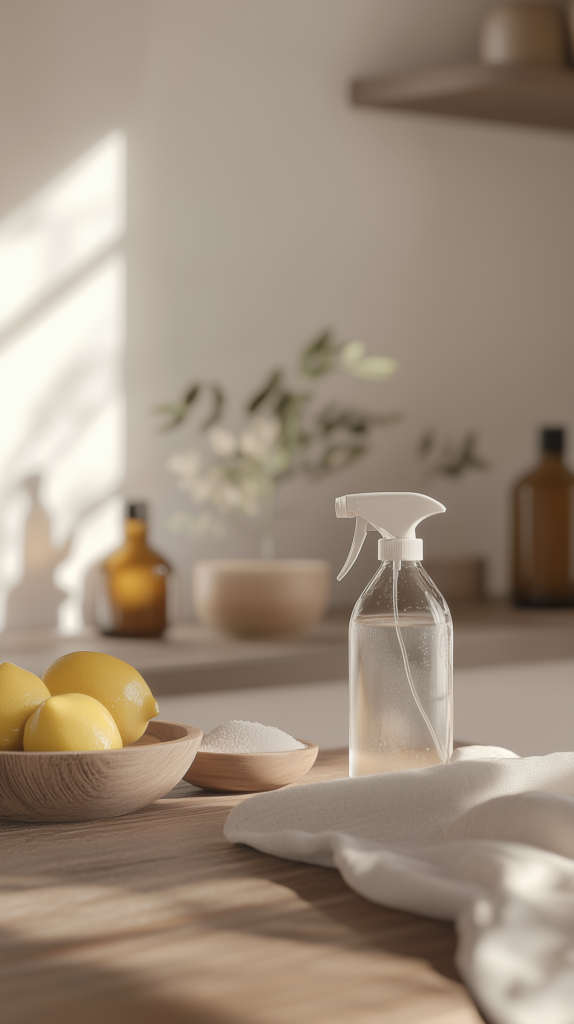
Many store-bought household products contain unnecessary chemicals and come in excessive packaging. Learning to make your own cleaning supplies and toiletries is a simple way to reduce dependence on commercial products while ensuring your home stays clean and toxin-free.
DIY cleaning supplies
With just a few natural ingredients, you can replace most chemical cleaners in your home.
- All-purpose cleaner: Mix vinegar, water, and a few drops of essential oil for a natural disinfectant.
- Laundry detergent: A simple blend of washing soda, borax, and castile soap cleans clothes effectively.
- Glass cleaner: A mix of vinegar and rubbing alcohol gives a streak-free shine to windows and mirrors.
Here are 9 easy diy homemade household cleaner recipes to try.
Homemade skincare and toiletries
Creating your own body care products not only reduces exposure to harmful chemicals but also helps eliminate plastic waste.
- Toothpaste: A mix of coconut oil, baking soda, and peppermint oil makes an effective homemade toothpaste.
- Deodorant: Arrowroot powder, coconut oil, and baking soda work as a natural deodorant alternative.
- Lotion bars: Beeswax, shea butter, and essential oils create an easy, chemical-free moisturizer.
Compost kitchen scraps
Even without a backyard, you can compost food waste and turn it into nutrient-rich soil for container gardening. Options like bokashi bins and Vermihut worm composting kits make it possible to compost indoors with minimal space.
4. Reduce Dependency on Grocery Stores
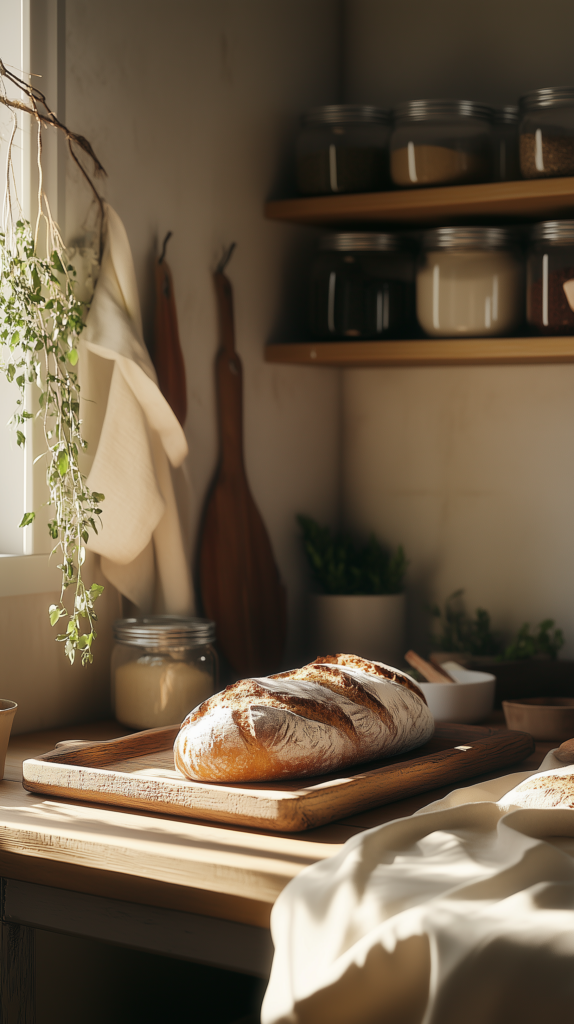
I’ve found the most rewarding parts of building an urban homestead has been creating a self sufficient kitchen that lowers my reliance on grocery stores. This makes it easy to avoid pre-packaged and processed foods and can help you take control of what you eat while cutting costs.
Local and alternative food sources
Finding fresh food outside of the grocery store strengthens local food systems and supports small farmers.
- Farmers’ markets and co-ops: These offer seasonal produce, meats, and dairy from local farmers.
- Community-supported agriculture (CSA): A subscription-based program where you receive a box of fresh, local produce weekly.
- Wild foraging: Even in urban areas, edible plants like dandelion greens and wild herbs can be found.
Make your own kitchen staples
Many grocery staples can be made at home with minimal effort, reducing reliance on processed foods and excess packaging.
- Bread: A simple sourdough or no-knead bread recipe can replace store-bought loaves. Here’s an easy way to make sourdough in small kitchens.
- Mayonnaise and condiments: Homemade versions of mayo, mustard, and ketchup are healthier and free from preservatives.
- Vegetable broth: Save vegetable scraps and simmer them into a flavorful broth instead of buying cartons.
- Nut milks: Almond or oat milk can be made at home with just water and a blender.
5. Learn Basic Repair and DIY Skills

Being self-sufficient isn’t just about the food we eat. It’s also about being able to repair and repurpose items instead of relying on new purchases. When I first learned how to sew a simple tear in my clothes, I realized how many things I had previously thrown away that could have been fixed.
Sewing and mending clothes
Even basic sewing skills can extend the life of your wardrobe and reduce waste.
- Learn how to patch holes and replace buttons
- Repair small rips instead of tossing damaged clothes
- Upcycle old fabric into reusable bags, cloth napkins, or cleaning rags
Basic home maintenance
Small home repairs can save money and reduce the need for outside services. You can find instructions and tutorials to repair almost anything on YouTube now. Before calling a plumber or maintenance man next time you have an issue, try searching for your specific problem. Most things are an easy fix like:
- Unclogging drains without chemicals
- Fixing leaky faucets and running toilets
- Sharpening kitchen knives and tools
Repurposing and upcycling
Before throwing something away, consider how it could be repurposed. Glass jars can be used for food storage, and wooden furniture can be refinished instead of replaced.
6. Create a Small-Scale Energy Backup Plan

A power outage in the city can quickly highlight how dependent we are on the grid. Many people assume that living off-grid requires installing solar panels or investing in expensive backup systems, but even small energy solutions can increase your resilience.
I remember the first time I lost power during a winter storm – I had no backup lighting, no way to charge my phone, and no plan for cooking without electricity. That experience made me realize how important it is to have even a basic energy backup system in place.
Solar-powered chargers and battery banks
Even if you can’t install full solar panels, small-scale solar-powered chargers and battery banks can keep essential devices running.
- Portable solar chargers are great for keeping phones, flashlights, and small electronics charged.
- Rechargeable battery packs store energy when the power is on, providing a backup when you need it.
- Power stations can run small appliances like fans or even a laptop during an outage.
The Jackery Explorer 300 is a compact yet powerful battery bank, perfect for urban self-sufficiency. With 293Wh capacity, multiple charging ports, and solar compatibility, it keeps phones, laptops, and small appliances running during outages—offering reliable, renewable backup power anytime.
Thermal cooking methods
Cooking without electricity is easier than you might think, and having a plan in place means you won’t have to rely on takeout during an outage.
- Thermal cookers work by heating food to a boil and then using insulation to retain the heat, allowing it to continue cooking without additional energy.
- Solar ovens use the sun to bake, roast, or dehydrate food, making them a great option for apartment balconies.
- Rocket stoves use small sticks or biomass for fuel and can be used outdoors for emergency cooking.
Candle making and oil lamps
Lighting is one of the first things you’ll need in a blackout, and store-bought candles run out quickly.
- Beeswax or soy wax candles are easy to make and burn longer than paraffin candles.
- Oil lamps can be fueled with olive oil or other natural oils for a long-lasting, sustainable light source.
- Solar lanterns can be charged during the day and provide hours of light at night.
Even if you’re not aiming for full energy independence, small backups can make urban living more resilient and help you feel more prepared for unexpected power outages.
7. Reduce Water Waste and Filter Drinking Water
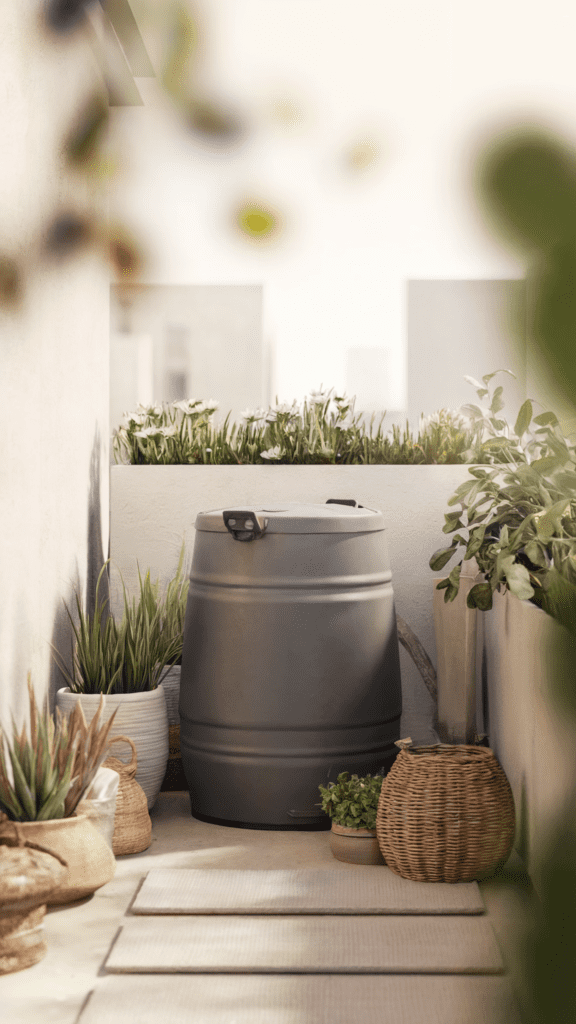
Water is one of the most important resources for self-sufficiency, but in the city, it’s easy to take it for granted. I used to run the tap without thinking about how much water I was wasting until I started making small changes that added up over time.
Conserving water doesn’t just help lower your bills, it also reduces dependency on municipal systems and prepares you for unexpected shortages. Beyond conservation, filtering or sourcing clean drinking water ensures you’re not at the mercy of city water treatment processes.
Rainwater collection
Even in an apartment, there are ways to collect and reuse rainwater.
- Small rain barrels can be placed on balconies or rooftops to collect water for plants.
- Gutter diverters can direct rain into storage containers if you have access to a drainpipe.
- DIY rain catchers using buckets or large bowls can provide free water for non-drinking uses.
Low-waste dishwashing and laundry habits
A few small changes in the kitchen and laundry routine can lead to significant water savings.
- Fill the sink or use a dishpan instead of running water continuously while washing dishes.
- Choose eco-friendly, water-efficient laundry detergents that work well in cold water.
- Run full loads to maximize efficiency and reduce unnecessary water use.
Filter Your Drinking Water and Find a Natural Source
Municipal tap water is treated with chemicals like chlorine and fluoride, and depending on your area, it may contain heavy metals, pharmaceuticals, or microplastics. Filtering your drinking water ensures you’re getting the cleanest, purest water possible.
- Some farms or health food stores also offer refill stations for spring or well water.
- Invest in a high-quality water filter, such as a gravity-fed system or reverse osmosis filter. A ZeroWater pitcher with filter is an excellent, budget friendly choice.
- If possible, seek out natural spring water as an alternative. Websites like FindASpring.org can help locate local natural springs where you can collect clean, untreated water.
8. Build Community and Swap Skills
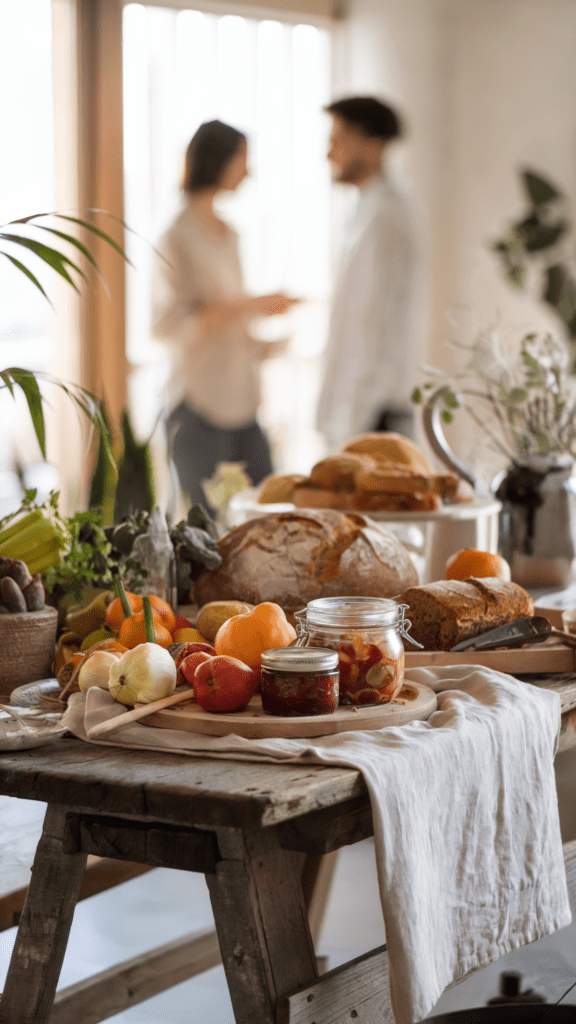
Self-sufficiency doesn’t mean doing everything alone. In fact, one of the most valuable resources you can cultivate is a community of like-minded people who share skills, trade goods, and support each other.
When I first started learning about urban homesteading, I quickly realized that having a network made the process easier and more fulfilling.
Join or start a local homesteading group
Even in a city, there are people interested in homesteading, sustainable living, and DIY skills.
- Check for gardening clubs, skill-sharing groups, or sustainability meetups.
- If none exist, start a small group with neighbors or friends who are interested in learning together.
- Look for online communities where urban homesteaders connect and exchange ideas.
Trade skills and services
Instead of hiring professionals for every need, consider trading skills with others in your community.
- Offer a skill you already have (sewing, fermenting, carpentry) in exchange for something you want to learn.
- Barter homegrown food, homemade goods, or services with others who have skills to offer.
- Host skill-sharing workshops to teach and learn with others.
Create a tool library or borrowing network
Not everyone has space to store tools, but that doesn’t mean you need to buy everything yourself.
- Check if your city has a tool library where you can borrow tools instead of buying.
- Set up a small borrowing system with friends and neighbors to share gardening tools, kitchen equipment, or DIY supplies.
- Use community swap events to exchange useful items instead of purchasing new ones.
Building strong relationships within your community makes self-sufficiency easier and more enjoyable.
9. Reconnect with Traditional Skills

Before convenience culture took over, people knew how to make, repair, and grow what they needed. Relearning these traditional skills is an essential part of self-sufficiency. When I first started baking my own bread, I was amazed at how simple and satisfying it was, and how much better it tasted than anything from the store.
Cooking from scratch
Cooking from scratch gives you full control over ingredients and reduces reliance on store-bought processed foods.
- Make homemade tortillas, pasta, or yogurt instead of buying prepackaged versions.
- Learn to cook in bulk and preserve meals for easier, cost-effective meal planning.
Here is a full guide to easy a clean eating meal plan for beginners.
Herbal remedies and natural medicine
Knowing how to use herbs, tinctures, and natural remedies can reduce reliance on over-the-counter medications for everyday ailments.
- Make homemade elderberry syrup to support immunity.
- Use calendula-infused oil for skin healing.
- Grow medicinal herbs like chamomile, lavender, and echinacea for teas and salves.
Minimalist living and decluttering
Living more simply means reducing unnecessary consumption and focusing on quality over quantity.
- Declutter and invest in high-quality, reusable items.
- Repair and repurpose what you already have instead of buying new.
- Adopt a “use what you have” mindset before purchasing anything.
Reconnecting with these skills fosters independence and helps you rely less on mass-produced goods.
10. Financial Self-Sufficiency and Smart Budgeting

True self-sufficiency includes financial independence. While homesteading often focuses on food and sustainability, having control over your finances allows you to make choices that align with your values.
Cut back on unnecessary expenses
One of the fastest ways to gain financial independence is by reducing reliance on subscriptions, debt, and impulse purchases.
- Cancel unused subscriptions and cut back on unnecessary spending.
- Prioritize spending on tools, skills, and resources that increase your self-sufficiency.
- Build an emergency fund to prepare for unexpected situations.
Start an Online Business That Aligns With Your Holistic Lifestyle
Creating an online business can be a powerful step toward greater self-sufficiency, even when living in an urban environment.
Not only does it offer financial independence and flexibility, but it also lets you align your income streams with your values, passions, and holistic lifestyle. When you build a business around your natural skills and interests, you become less dependent on traditional jobs and more empowered to live life on your own terms.
Here are some simple ways to monetize your skills for extra income:
Teach or Share Your Knowledge:
- Offer in-person or virtual workshops on topics like gardening, DIY home skills, or food preservation.
- Create digital products such as e-books, guides, or video tutorials sharing your expertise.
- Start an online community or paid membership focused on a specific area of interest.
Offer Services Based on Your Skills:
- Help others organize their pantry, prep meals, or set up efficient food storage systems.
- Provide consulting for urban homesteading, container gardening, or eco-friendly home transitions.
- Offer DIY repair services for small home projects or furniture refinishing.
Build a Sustainable Online Business:
By creating an online business that feels authentic and aligned, you can generate income from anywhere life takes you. If you’re curious about how to get started, I’ve shared a simple step-by-step guide on how to start an online business that supports a holistic lifestyle.
Conclusion
Becoming more self-sufficient in the city isn’t about doing everything at once, it’s about making small, intentional changes that add up over time. The key is to start where you are.
Find a local farmers market, try making one homemade staple, or explore ways to monetize your skills. The more you shift toward self-sufficiency, the more resilient and empowered you’ll become – no matter where you live.

